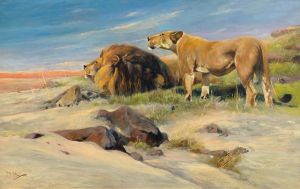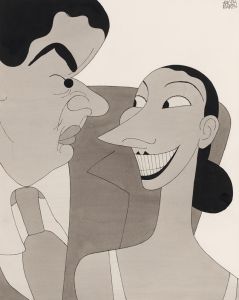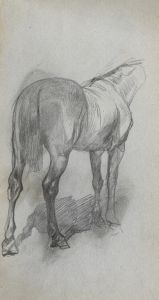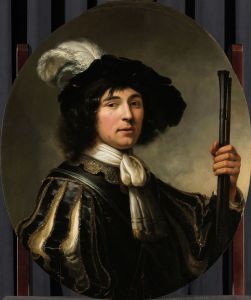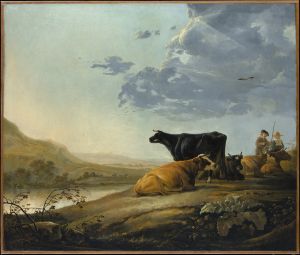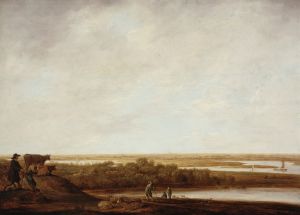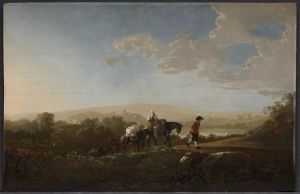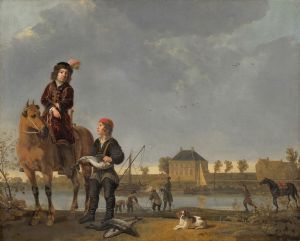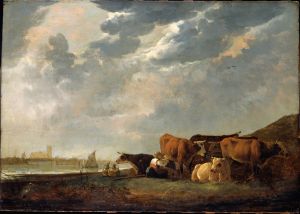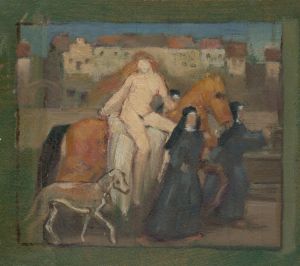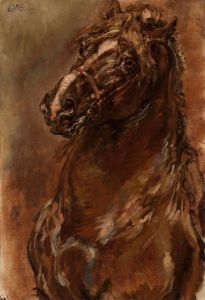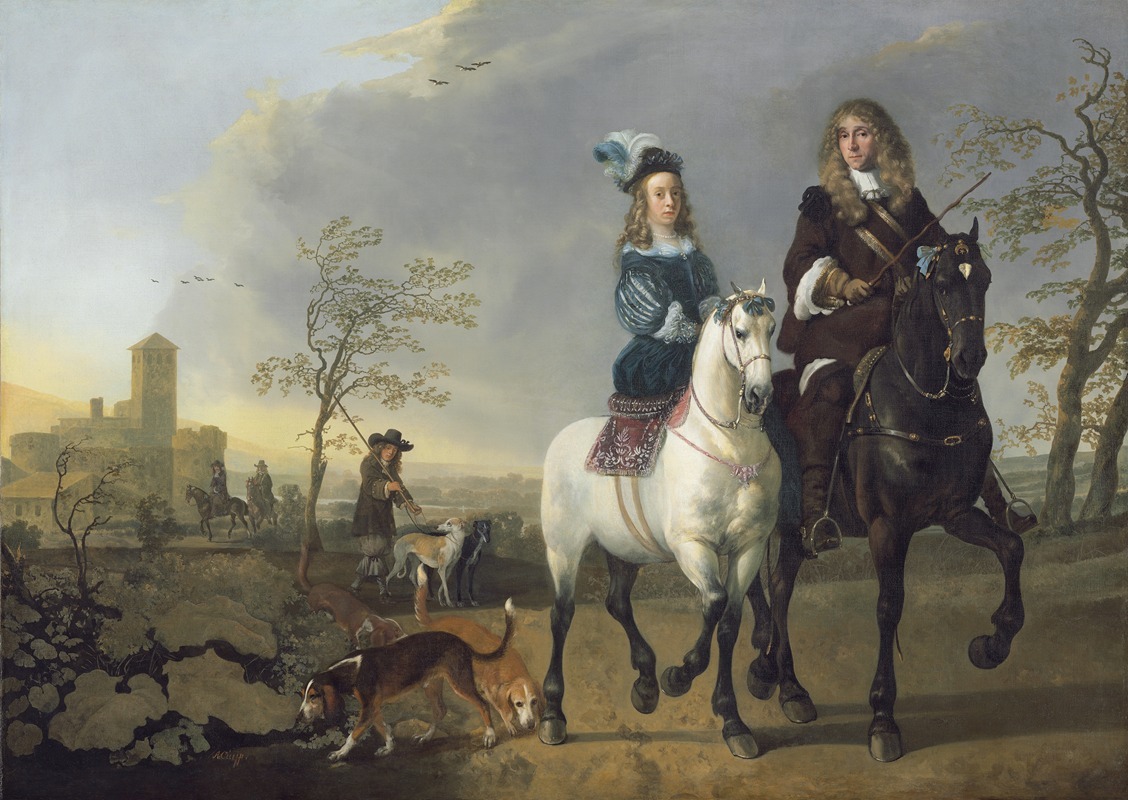
Lady and Gentleman on Horseback
A hand-painted replica of Aelbert Cuyp’s masterpiece Lady and Gentleman on Horseback, meticulously crafted by professional artists to capture the true essence of the original. Each piece is created with museum-quality canvas and rare mineral pigments, carefully painted by experienced artists with delicate brushstrokes and rich, layered colors to perfectly recreate the texture of the original artwork. Unlike machine-printed reproductions, this hand-painted version brings the painting to life, infused with the artist’s emotions and skill in every stroke. Whether for personal collection or home decoration, it instantly elevates the artistic atmosphere of any space.
Aelbert Cuyp, a prominent Dutch landscape painter of the 17th century, is celebrated for his idyllic and atmospheric depictions of the Dutch countryside. One of his notable works, "Lady and Gentleman on Horseback," exemplifies his mastery in capturing serene landscapes and the genteel leisure activities of the Dutch elite during the Golden Age.
"Lady and Gentleman on Horseback" is an oil painting that showcases Cuyp's characteristic style, which combines landscape painting with portraiture. The painting features a man and a woman elegantly dressed, riding horses through a tranquil rural setting. The figures are depicted with a sense of grace and poise, reflecting the social status and leisurely pursuits of the Dutch upper class of the time.
Cuyp's use of light is particularly noteworthy in this painting. He employs a warm, golden light that bathes the entire scene, creating a harmonious and peaceful atmosphere. This use of light not only enhances the natural beauty of the landscape but also highlights the figures, giving them a sense of prominence within the composition. The soft glow of the light suggests either early morning or late afternoon, times of day that Cuyp often favored for their gentle and evocative lighting effects.
The landscape itself is rendered with meticulous attention to detail, a hallmark of Cuyp's work. Rolling hills, distant trees, and a serene sky form the backdrop, providing a sense of depth and space. Cuyp's landscapes often reflect the topography of the Dutch countryside, characterized by its flatness and expansiveness, although he sometimes took creative liberties to enhance the visual impact of his compositions.
Cuyp's ability to blend portraiture with landscape painting is evident in the way he integrates the figures into the natural setting. The riders are not merely placed against a backdrop; instead, they are part of the landscape, interacting with it in a way that suggests movement and narrative. This integration is a testament to Cuyp's skill in composition and his understanding of the relationship between humans and their environment.
The painting also reflects the cultural and social context of the Dutch Golden Age, a period marked by economic prosperity and a flourishing of the arts. During this time, there was a growing interest in landscape painting, partly due to the Dutch people's connection to their land and the pride they took in their country's natural beauty. Paintings like "Lady and Gentleman on Horseback" catered to the tastes of wealthy patrons who desired art that celebrated their lifestyle and surroundings.
Aelbert Cuyp's work, including "Lady and Gentleman on Horseback," had a significant influence on later artists, particularly in England. His landscapes were admired for their luminosity and tranquility, qualities that resonated with the English landscape painters of the 18th and 19th centuries, such as Thomas Gainsborough and J.M.W. Turner.
In summary, "Lady and Gentleman on Horseback" is a quintessential example of Aelbert Cuyp's artistic achievements. Through his masterful use of light, composition, and integration of figures within the landscape, Cuyp created a work that not only captures the essence of the Dutch countryside but also reflects the cultural and social milieu of his time.





